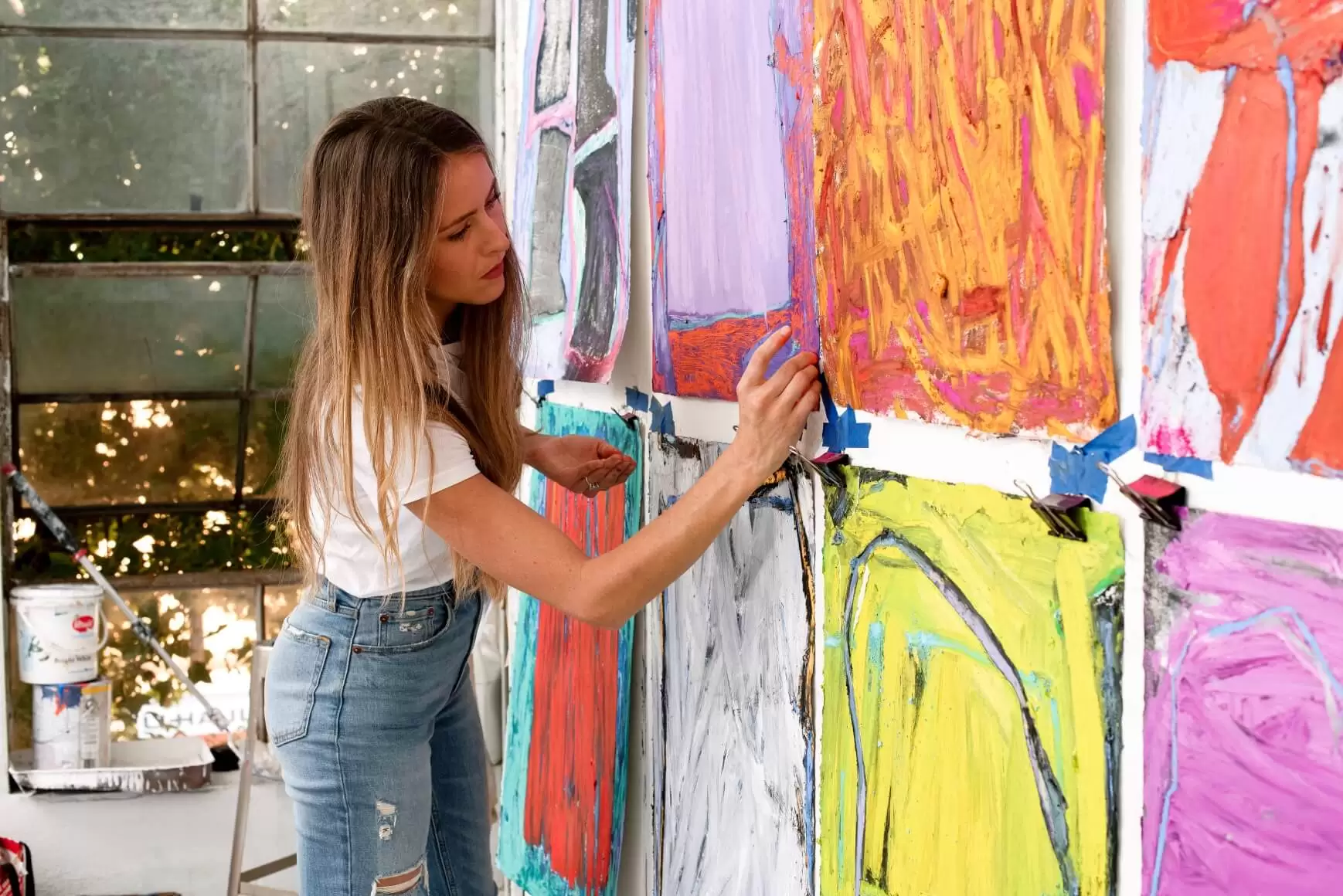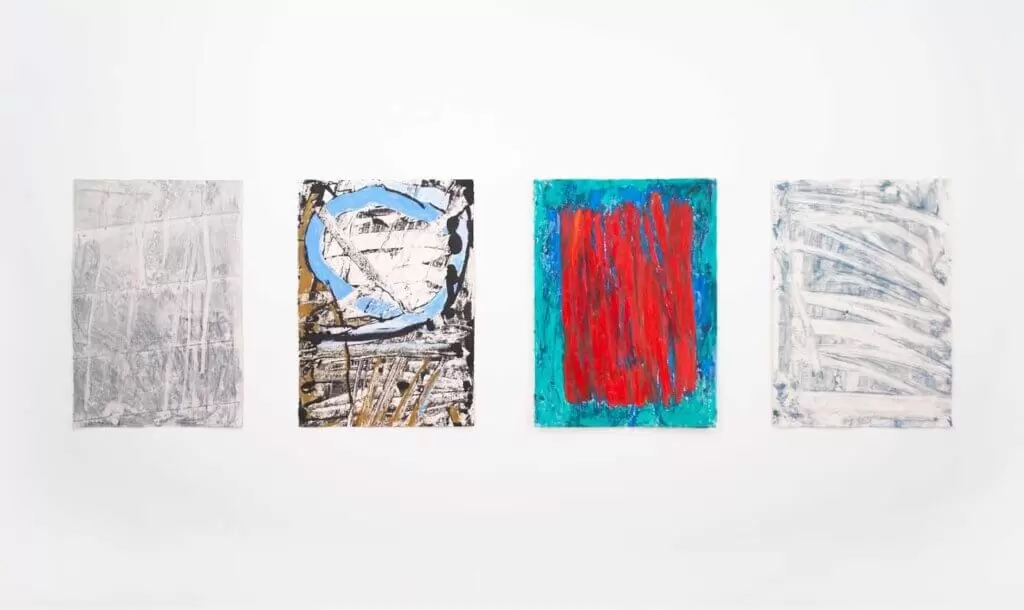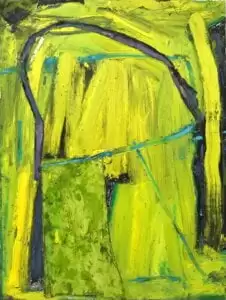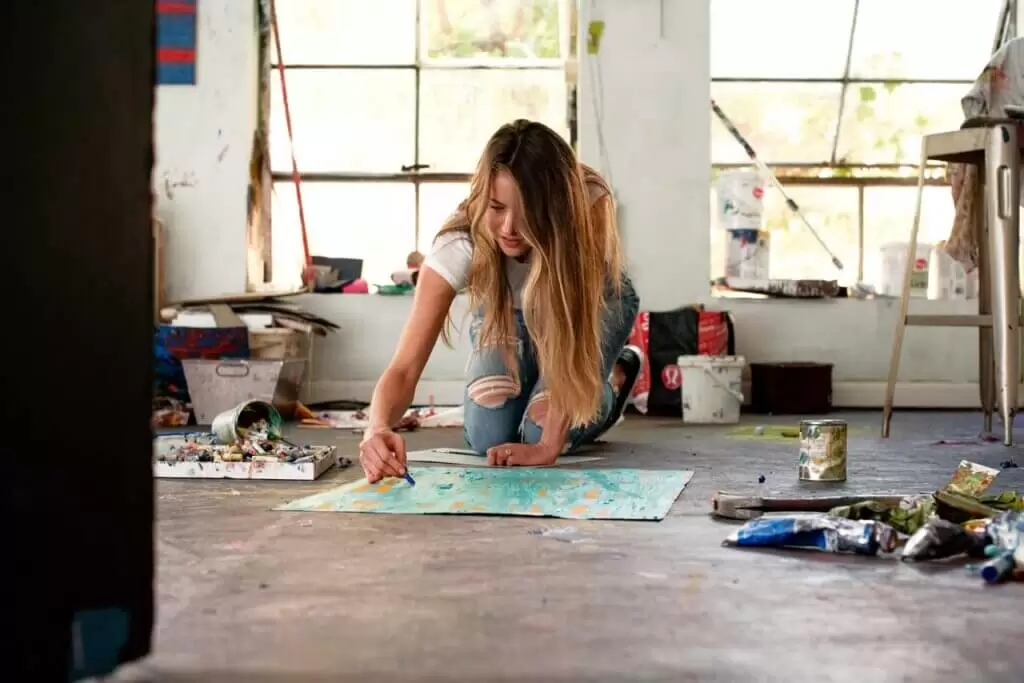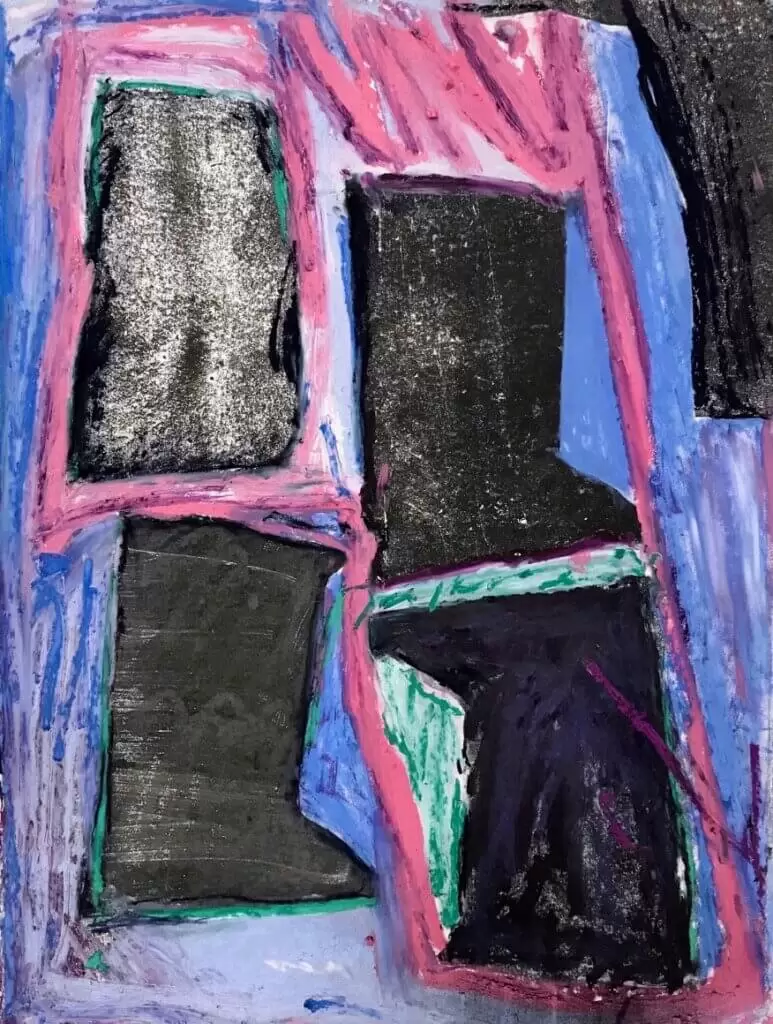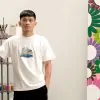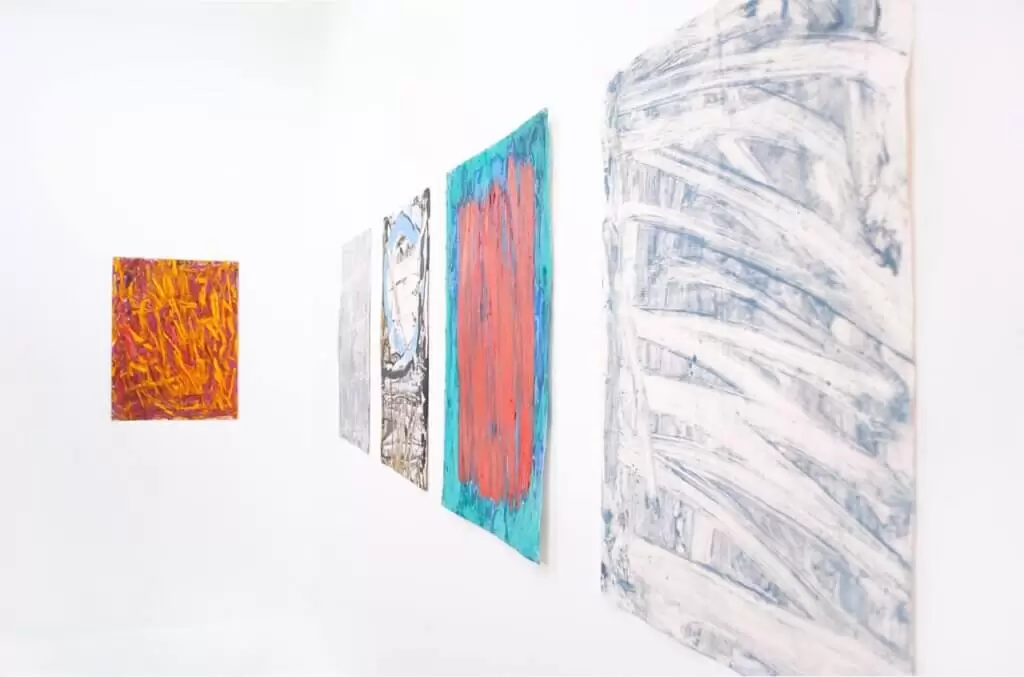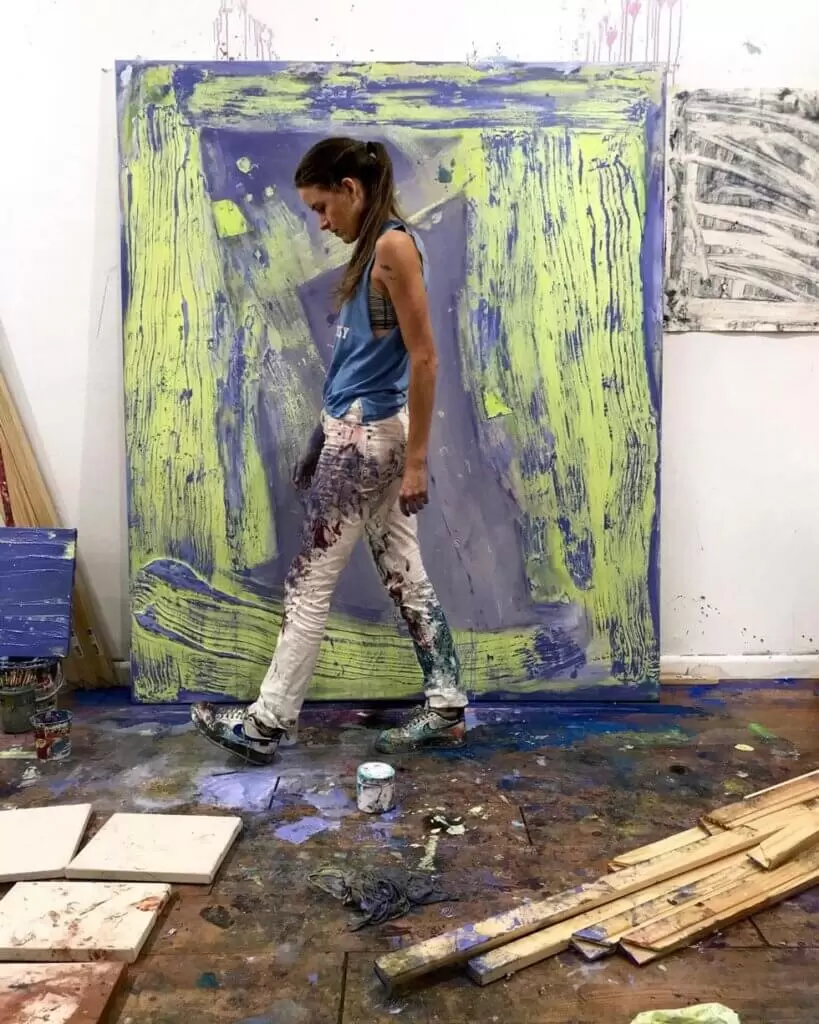Florida based artist Taylor O. Thomas engages gestural abstraction to explore human tendencies and the relationship between body and mind. Influenced by expressionism, Thomas utilises painting as a vessel to engage and digest her experiences. She manipulates colour and movement to conceive lavishly textured works that appear authentic and natural.

Painting allows me to grapple with and digest my experiences on a visual and material level
Taylor O. Thomas
Desirable factors for connoisseur collectors, Thomas is an artist to keep a watchful eye on as her tactical compositions are exhibited in galleries and held in private collections across the United States, Asia and Europe. We managed to catch up with Taylor while currently exhibiting her new works on paper at New York’s LAUNCH F18. In this interview, we learn more about her creative process, inspiration and more.
Q: For those who don’t know you, can you please introduce yourself?
Taylor O. Thomas: My name is Taylor, and I’m a painter currently based in Tampa, Florida. I create abstract paintings on paper and canvas, and my practice revolves around the physical process of developing an image. I’m always trying to evolve my painterly language via tactile, experimental, and gestural means.
Q: What is your inspiration, and why do you do what you do?
Taylor O. Thomas: Painting allows me to grapple with and digest my experiences on a visual and material level. I’m heavily influenced by expressionism– that is, my ability to mentally and emotionally pour myself out through external, physical acts.
I’m also infatuated with the formal qualities of painting, and I find that my motivation for developing an image heightens the more I manipulate marks upon its surface. My paintings allow me to evaluate my own boundaries, and whether I want to break or sustain them. I keep doing what I do because I’m in a relationship with my practice, to put it simply. I look at it as this entity that constantly challenges me. Painting forces me into a level of awareness with myself and my surroundings that I’m not sure I could tap into otherwise.
Q: What would you say your artistic background is? How long have you been working?
Taylor O. Thomas: I grew up painting, drawing, singing, and performing– creativity was a big focus of my childhood. But I didn’t start taking my art practice seriously until college, when I chose to major in studio art and attempted to figure out what it meant to “be an artist” and live into that role.
Though I definitely didn’t figure that out during those four years at my institution, I dedicated myself to continuing to create once I graduated. Since then, it’s been 13 years of painting (and doing whatever it took to sustain and expand my practice). I worked for other artists, built relationships with a few galleries early on, attended residences, took on a myriad of side jobs, and then got my MFA in 2019. I’ve always been determined to make space and time to just keep painting– there’s never been an option, reason, or opportunity big enough to make me walk away from it. And I’m really grateful that I get to keep choosing it over and over again.
Q: Can you tell us about your creative process?
Taylor O. Thomas: In certain instances, I approach my works with a series of questions. Some that I used to begin my Period Comma Sunset works, for example, were: How can I express what it means to hold opposite emotions simultaneously? How do I create a painting about making space for someone or something that isn’t there, but could be? What does it look like to imply insecurity through gesture? When we find ourselves covered, are we really most secure?
On the other hand, I also handle many paintings with a deliberate intention to let go of preconceived ideas. This is when some of the most valuable marks and color interactions occur, when the body takes over and the mind doesn’t need to know where it may be going. There is something so entrancing about working with inks, oil sticks, paints, and pastels– it’s the fluidity and the buildup of it all. I often find myself surrounded by three or more surfaces at a time, allowing my eyes and legs to jump from one work on the floor up to another hanging on the wall. I’m too messy and awkward to call it a dance– but I think of the process as a moving meditation.
Q: What is the reason behind your fusion of abstraction with human tendencies in your work?
Taylor O. Thomas: I deeply value the power of abstraction to speak for things that are otherwise difficult to articulate– those moments, sentiments, or feelings that can’t quite be captured with words. Early on, I realized I’m able to express more through my bodily gestures than through depictions of a body. As my practice has grown, so has my interest in painting the things I can’t fully say instead of the things I can explain using legible forms.
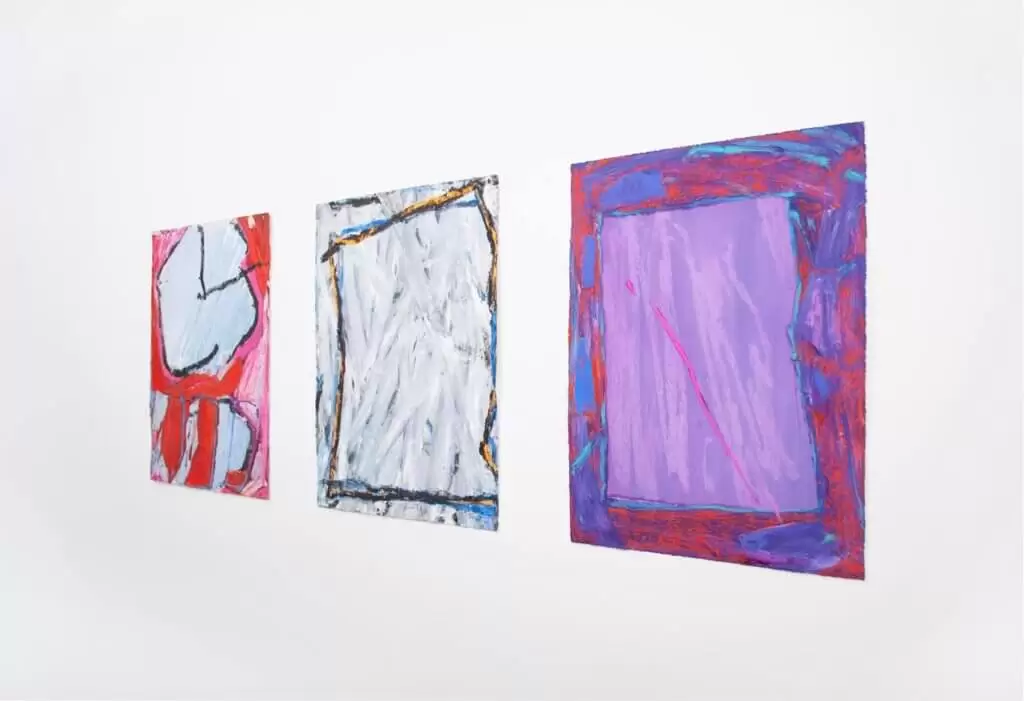
LAUNCH F18, New York
November 12 – January 30, 2021
Nonobjective painting, for me, has always gone hand-in-hand with my experiences and struggles with being a body. A female body, a perceived weak body, a feeling body, a body that relates, a body that takes up space. By laying down movements and marks, I feel enabled to assert myself (and subsequently reveal my tendencies and limitations, too). Ironically, writing about these aspects of painting is the very reason I paint– it feels more natural to express myself through tactile gestures than by words on a page.

November 12 – January 30, 2021
Q: The work created for Period Comma Sunset arose from your experience and processing of the pandemic, describe what came out in the work after going through that?
Taylor O. Thomas: The paintings I created embody the attitude and experience of my Period Comma Sunset (i.e., pandemic) days. As a series, these images are connected to and, in certain arrangements, dependent on one another while also being separated into distinct moments. More than anything, I was impacted by the inexplicable sense of warped time over the last year. When writing about the show, I noted that the pandemic felt both fast and slow, repetitive and yet unpredictable.
I can’t find any other way to describe it. And that is exactly what I tried to inject into the works– a disjointed story of my various moods, conditions, and changing relationships to space and time. Each painting hinges upon a recurring format – paper, rectangle, material, mark– but also expresses my everchanging state upon entering my studio space daily. These 15 paintings were both my way of working through the pandemic, as well as my visual traces that I could leave with it.
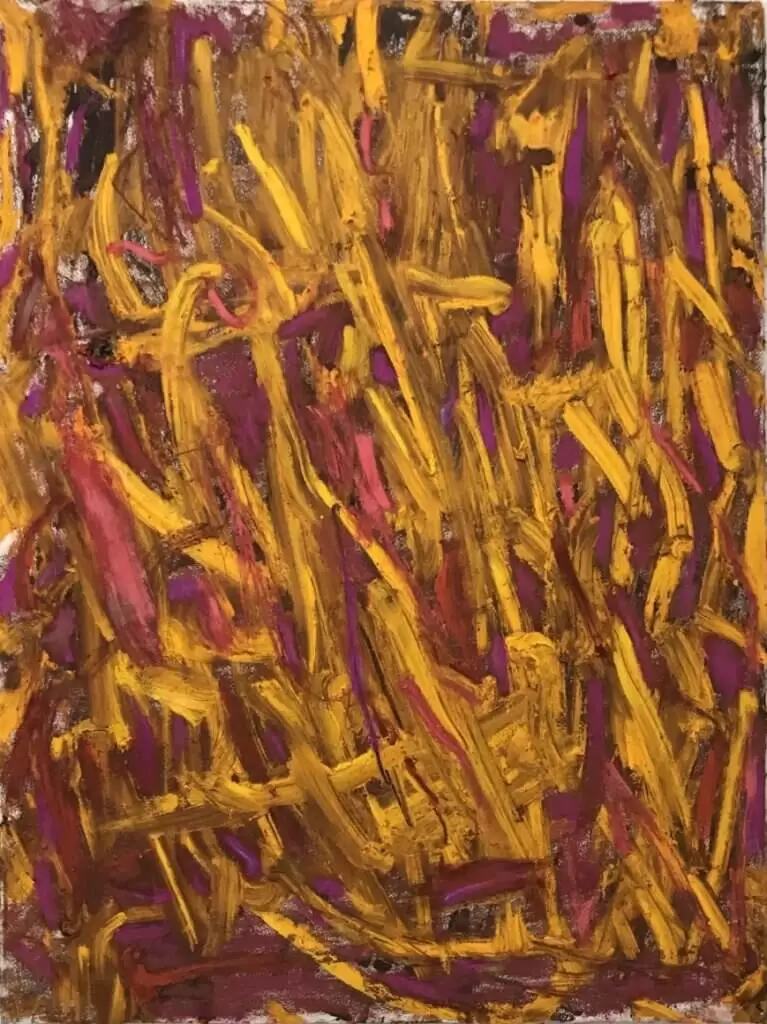
Oil, oil stick, ink and pastel on paper
30 x 22 in (76.2 x 55.8 cm)
Q: What was the first piece of art you made that cemented your path as an artist?
Taylor O. Thomas: There was this one painting that I made years ago when I lived in Charlotte, North Carolina, and I’ll never forget it. Not because it was a good piece– it was awful, actually– but because of how it was made and the season I went through while making it. I didn’t have a studio at the time; I painted using little sample, half-pint jugs of Home Depot paint. Still, all I wanted to do was work big (very big), so I hauled my brushes and half-pints to a public park and nailed the 12-foot canvas to the trees.
I loaded and unloaded my car to paint in those woods a dozen times until the work was complete. Finally, I dragged it home, still wet, to let it air while draping over my 3rd story balcony. For me, this painting solidified that there was something in me that made me need to paint, even when it was inconvenient to do so. I think back on that painting a lot– oftentimes, when I need a little reminder that ideal conditions aren’t necessary (nor guaranteed) to create.
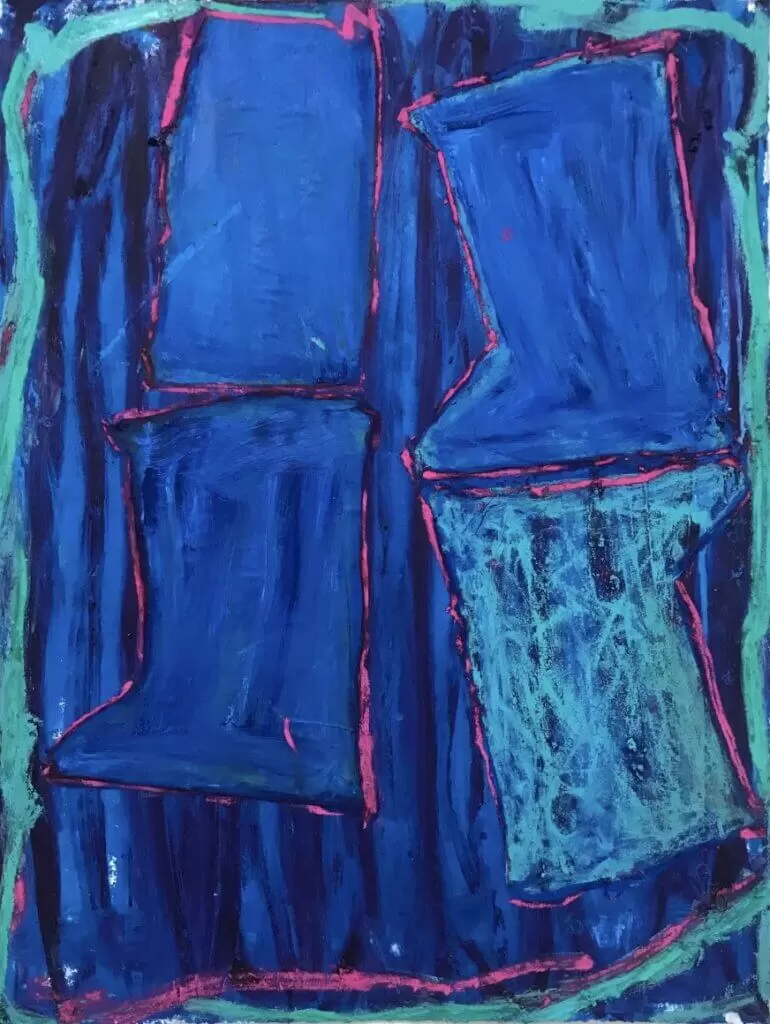
Oil, oil stick, ink, pastel and collage on paper
30 x 22 in (76.2 x 55.8 cm)
Q: Who are your biggest inspirations?
Taylor O. Thomas: I’m inspired by my peers whose practices I get to watch evolve year after year, by strong female painters who have gone before me and will proceed ahead of me like Joan Mitchell, Amy Sillman, Katherine Bradford, Keemia Kline, or Cristina de Miguel (to name a few of many), and by my husband whose creative depth and ambition never fails to encourage me.
Q: What do you think about the current state of the art world?
Taylor O. Thomas: To be honest, I feel like I’ve focused more on the current state of the world at large than the art world– and I think the art world has done that, too. It’s been encouraging to see many galleries over the past year band together with artists all over the globe to create a spirit of support amid the turmoil of 2020.
The number of exhibitions supporting justice causes, Black Lives Matter efforts, healthcare workers, and food programs has been amazing. Though I think we are all itching to view exhibitions in real life, I am a great example of an artist who wouldn’t have otherwise gotten to show this fall were it not for a gallery who allowed an exhibition opportunity to happen via an online format. I’m encouraged by how the art world has found innovative ways to continue pushing forward and, in turn, it’s opened up more outlets to artists who may not have gotten that access prior. My hope is that the positive changes the pandemic inspired will only be expanded upon as the “new normal” of the art world solidifies.
Q: What role does the artist have in society?
Taylor O. Thomas: The role of an artist is to speak his or her truth (any truth, a common truth, an unsettling truth, a unique truth), to challenge, to inspire, to add dimension, to offer variation, to invite, to communicate, and to be a good human (well, I’d like to think this is part of our role).
Q: What’s next for you as an artist?
Taylor O. Thomas: I’m currently finalizing works for an upcoming, two-person show in Sydney, Australia, which will be a refreshing way to kick off this year. After that, I plan on creating a new body of work that I can develop during my residency at Vermont Studio Center this spring. 2020 really reminded me of the value of refocusing on my purpose and motivations.
So, moving forward, one of my biggest goals is to sustain the joy and intention that is central to my practice, and to pursue painting from a place of eagerness instead of force. I’m excited to see what comes next– it can only get better from here (let’s hope!).
https://www.instagram.com/taylorothomas/
http://www.launchf18.com/viewing-room/taylor-o-thomas
©2021 Taylor O. Thomas, Launch F18 New York


